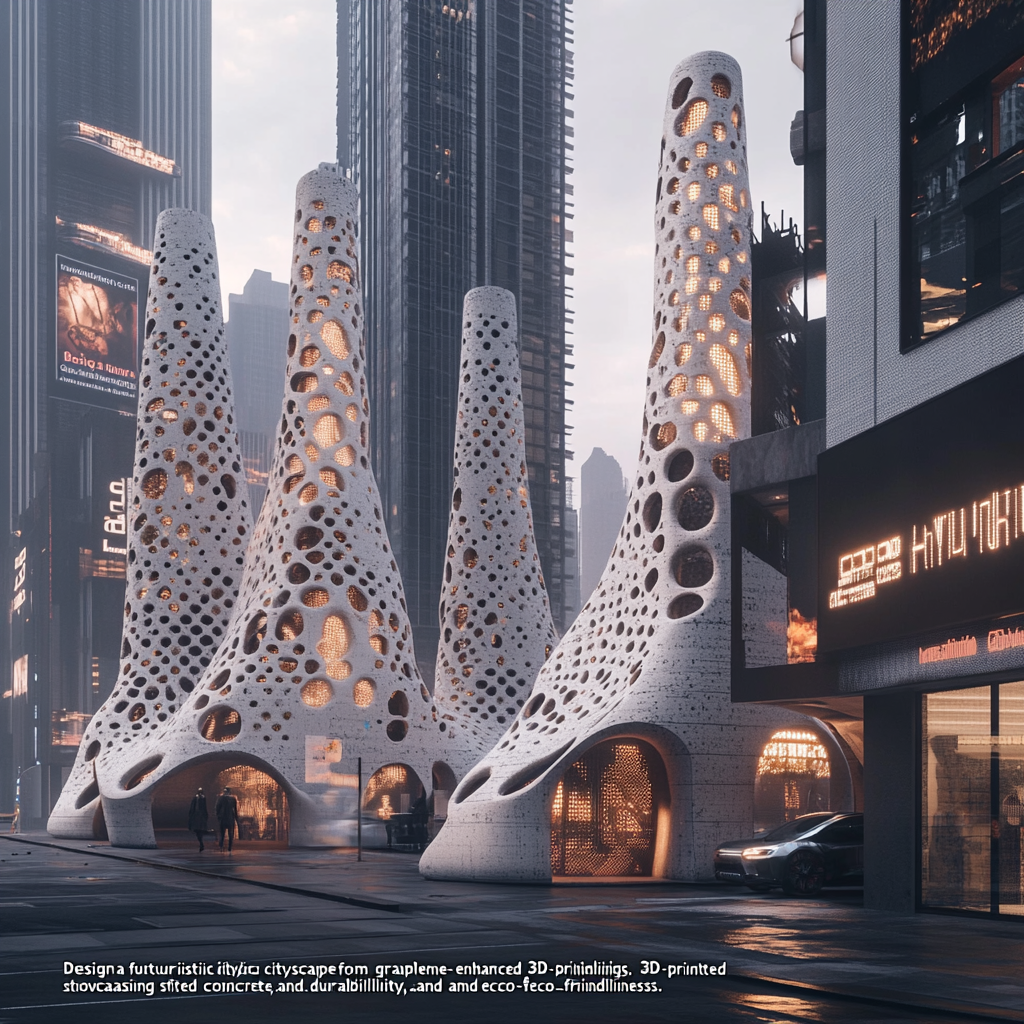
Graphene-Enhanced 3D-Printed Concrete Cuts Emissions by 31%
In the bustling realm of construction, a game-changing innovation is reshaping how we build and what we build with. Enter the dazzling world of graphene-enhanced 3D-printed concrete, a concoction so remarkable that it makes traditional concrete look like an outdated relic. Researchers at the University of Virginia (UVA) have cracked the code on creating a concrete that not only flexes with strength and durability but also takes a significant swing at our planet's carbon emissions.
The Genius Behind the Madness
Picture a dynamic team led by Professor Osman Ozbulut, whose brainchild has been nothing short of revolutionary. Alongside a cast of talented individuals, including visiting scholar Tuğba Baytak and the inquisitive Tawfeeq Gdeh, the UVA group has drawn from a deep well of knowledge in civil and environmental engineering. Their creative juices overflowed in the Resilient and Advanced Infrastructure Laboratory, with a sprinkle of cooperation from the Virginia Transportation Research Council (VTRC) and environmental whiz Lisa Colosi Peterson. They didn’t just come up with a flashy concept; they struck upon a potent blend of graphene and a special cement mix called LC2. This combination is like the power couple of the building materials world: strong, flexible, and absolutely ready for the limelight.
Graphene – a term that often gets tossed around like a trendy hashtag – is actually a superhero in the building materials arena. It’s light, incredibly strong, and imbues the concrete with a level of toughness that would make your workout routine look weak. It helps the concrete handle the stresses of 3D printing – an art that demands resilience and finesse. So what if we could harness that strength while also giving a shout-out to Mother Earth? Spoiler alert: we can!
A Green Thumb’s Dream
Let’s explore the environmental ramifications, shall we? This isn't just another boring lecture about reducing emissions. No, this is a full-blown eco-revolution! The work of researchers Zhangfan Jiang and Lisa Colosi Peterson reveals a delightful surprise: their graphene-infused mix could reduce greenhouse gas emissions by about 31% compared to your run-of-the-mill 3D-printed concrete mixes. Yes, you read that correctly – nearly a third less pollution swirling around. It's a clear victory for eco-conscious construction, as the industry wakes up to the pressing need for greener choices.
Who would have thought concrete could be eco-friendly? This clue drops like a mic, signaling a larger movement towards sustainability and responsibility in construction practices. You can almost hear the planet sighing in relief.
Concrete Dreams Take Flight
But wait, don't go thinking this innovation is just theoretical fluff! Partnering with the VTRC brought this material down to Earth—or rather, the ground we walk on. Practical applications of this brilliant concoction have been put through rigorous testing to determine its real-world value, particularly in transportation infrastructures. If you think about it, isn’t it comforting to know that the roads you drive on might be made from a material that’s not only cutting-edge but also kinder to the environment? It’s a win-win situation; we’re no longer left hoping for ‘futuristic’ to come our way—it's here!
Looking Ahead: The Future is Bright
As Baytak emphasizes, this innovation isn’t just a passing fancy; it’s crucial for shaping the future of construction. We’re standing at the threshold of an era bursting with potential for sustainable building methods, and savvy industry players are licking their chops at the thought of further eco-friendly advances. This is not some pie-in-the-sky talk; it’s the dawn of a new reality where sturdy structures are synonymous with environmental care.
Yet, amidst the excitement, cautionary tales have emerged. Discussions on platforms like Reddit showcase a mixed bag of opinions about novel construction methods. Some offer tantalizing ideas about blending materials like PVC or copper into the 3D printing mix for aesthetic or practical benefits. But others have raised eyebrows over the potential toxicity of these new concoctions. It's a reminder that while the future looks bright, we must tread carefully and embrace thorough testing before unleashing this innovation on a grand scale.
Final Thoughts
The creation of graphene-enhanced 3D-printed concrete marks a defining shift in the construction landscape. With its exceptional strength, unparalleled durability, and delightful reduction in carbon footprint, this material has the potential to flip the industry on its head. We are indeed on the cusp of a greener, more efficient future in construction, where artistic design meets environmental mindfulness.
Now, make yourself a part of this vibrant conversation! Knowledge is power, and staying in the loop will only enrich your understanding of the ever-evolving world around us. Want to stay up to date with the latest news on innovative construction materials and technologies? Subscribe to our Telegram channel: @channel_neirotoken
Remember, the future of construction isn’t just knocking—it’s here, and it’s wrapped in a layer of graphene!

